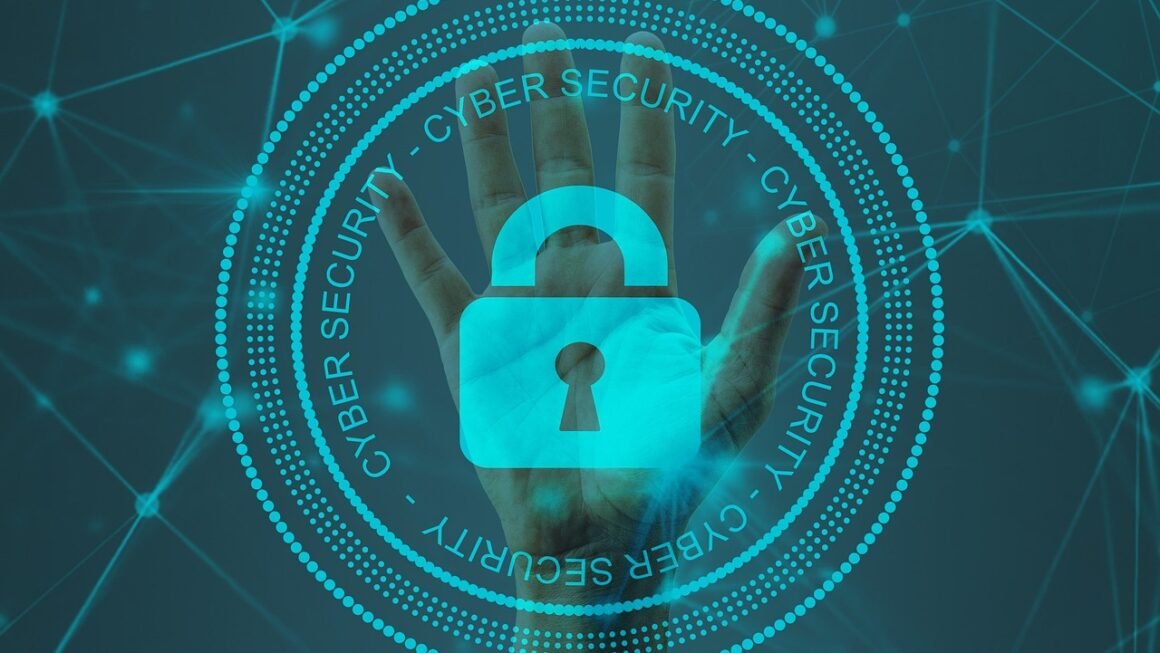Imagine receiving an email that looks exactly like it’s from your bank, urgently requesting you to verify your account details. Your heart races. You click the link, enter your credentials, and breathe a sigh of relief. But what if that email wasn’t from your bank at all? What if it was a carefully crafted trap designed to steal your information? This is the reality of phishing scams, a pervasive and increasingly sophisticated threat that can impact anyone, from individuals to large organizations. Understanding how these scams work and how to protect yourself is more crucial than ever in today’s digital landscape.
What is Phishing?
Defining Phishing Scams
Phishing is a type of cybercrime where criminals attempt to deceive individuals into revealing sensitive information, such as usernames, passwords, credit card details, and social security numbers. They often disguise themselves as trustworthy entities – banks, government agencies, social media platforms, or even your favorite online retailers. The goal is to trick you into clicking a malicious link or providing information that can be used for identity theft, financial fraud, or other malicious activities.
How Phishing Works
Phishing scams typically involve:
- Deceptive Communication: Criminals use emails, text messages (smishing), phone calls (vishing), or even social media messages that appear legitimate.
- Sense of Urgency: They create a false sense of urgency, often threatening account closure, legal action, or missed opportunities if you don’t act immediately.
- Malicious Links or Attachments: These lead to fake websites designed to steal your credentials or download malware onto your device.
- Request for Sensitive Information: They directly ask for your personal or financial information, which legitimate organizations rarely do through unsolicited communications.
Types of Phishing Attacks
Phishing attacks come in various forms:
- Spear Phishing: Targets specific individuals or organizations, often using personalized information to increase credibility. Example: An email impersonating your CEO asking you to wire money.
- Whaling: Targets high-profile individuals, such as executives or celebrities, with access to sensitive information.
- Clone Phishing: Involves copying legitimate emails and replacing the links or attachments with malicious ones.
- Angler Phishing: Uses fake social media accounts to trick users into providing information or downloading malware.
Recognizing Phishing Attempts
Identifying Suspicious Emails
Learning to recognize phishing emails is your first line of defense. Look for these red flags:
- Generic Greetings: Instead of “Dear [Your Name],” the email might use “Dear Customer” or “Dear User.”
- Poor Grammar and Spelling: Phishing emails often contain grammatical errors, typos, and awkward phrasing.
- Suspicious Links: Hover over links before clicking to see the actual URL. Legitimate websites usually use secure “HTTPS” protocols. If the URL looks unfamiliar or uses a strange domain, it’s likely a scam.
- Urgent Requests: Be wary of emails that demand immediate action, threatening consequences if you don’t comply.
- Unusual Attachments: Avoid opening attachments from unknown senders, especially if they have extensions like .exe, .zip, or .scr.
Spotting Fake Websites
Phishing emails often direct you to fake websites that look identical to legitimate ones. Pay attention to these details:
- URL Discrepancies: Double-check the website’s URL for typos or variations from the official website address.
- Missing Security Certificates: Look for the padlock icon in the address bar, indicating a secure connection (HTTPS). If it’s missing, the website might not be legitimate.
- Inconsistent Design: Fake websites may have outdated or poorly designed layouts.
- Request for Excessive Information: Be suspicious if a website asks for more information than necessary, especially sensitive details like your social security number.
Examples of Phishing Scams
- Fake Bank Emails: Claiming your account has been compromised and requiring you to verify your information.
- Fake Invoice Scams: Sending you a fake invoice with a malicious link or attachment.
- Package Delivery Scams: Claiming a package delivery has failed and asking you to provide personal information or pay a “redelivery fee.”
- Tech Support Scams: Claiming your computer has a virus and offering to “fix” it remotely (usually installing malware).
- Job Offer Scams: Promising a lucrative job opportunity but requiring you to pay upfront fees or provide sensitive information.
Protecting Yourself from Phishing
Practical Tips and Strategies
- Be Skeptical: Always question unsolicited emails or messages, especially those requesting personal information.
- Verify the Source: Contact the organization directly using a known phone number or website to verify the communication.
- Never Click on Suspicious Links: Type the website address directly into your browser instead of clicking on links in emails.
- Use Strong Passwords: Create strong, unique passwords for all your online accounts, and consider using a password manager.
- Enable Two-Factor Authentication (2FA): This adds an extra layer of security to your accounts, requiring a second form of verification (e.g., a code sent to your phone).
- Keep Your Software Updated: Regularly update your operating system, web browser, and antivirus software to protect against known vulnerabilities.
- Install Antivirus Software: A reputable antivirus program can detect and block phishing websites and malware.
- Educate Yourself and Others: Stay informed about the latest phishing tactics and share your knowledge with friends and family.
Technical Safeguards
- Email Filtering: Use email filters to block spam and phishing emails. Most email providers have built-in filtering options.
- Web Browser Security Features: Enable your web browser’s security features, such as phishing and malware protection.
- Firewall Protection: A firewall can help prevent unauthorized access to your computer and network.
- DNS Filtering: Use a DNS filtering service to block access to known phishing websites.
What to Do if You Suspect a Phishing Attack
- Don’t Click on Anything: Do not click on any links or open any attachments in the suspicious email.
- Report the Phishing Attempt: Report the email to the organization that the scammer is impersonating and to the Anti-Phishing Working Group (APWG).
- Change Your Passwords: If you suspect you’ve entered your password on a fake website, immediately change your password for that account and any other accounts that use the same password.
- Monitor Your Accounts: Keep a close eye on your bank accounts, credit card statements, and other financial accounts for any unauthorized activity.
- Contact Your Bank or Credit Card Company: If you’ve provided your financial information to a scammer, contact your bank or credit card company immediately to report the incident and potentially freeze your accounts.
- Consider Identity Theft Protection Services: These services can monitor your credit reports and alert you to any suspicious activity.
The Human Element: Why Phishing Works
Social Engineering Tactics
Phishing attacks often exploit human psychology through social engineering tactics. These tactics manipulate your emotions and trust to get you to act impulsively. Some common social engineering techniques include:
- Authority: Impersonating authority figures, such as law enforcement or government officials, to intimidate victims.
- Trust: Building rapport by impersonating trusted organizations or individuals.
- Fear: Creating a sense of panic or urgency to bypass critical thinking.
- Greed: Promising unrealistic rewards or prizes to lure victims.
- Curiosity: Using enticing subject lines or content to pique interest and encourage clicks.
The Importance of Security Awareness Training
Security awareness training can significantly reduce the risk of phishing attacks. Training should cover:
- Identifying Phishing Emails: Teaching employees how to recognize the red flags of phishing emails.
- Safe Browsing Practices: Educating employees on safe website browsing habits.
- Password Security: Emphasizing the importance of strong passwords and 2FA.
- Reporting Procedures: Providing clear guidelines on how to report suspected phishing attempts.
- Real-World Simulations: Conducting simulated phishing attacks to test employees’ awareness and response.
Conclusion
Phishing scams pose a constant and evolving threat, requiring vigilance and proactive measures to stay safe. By understanding how these scams work, recognizing their red flags, and implementing practical security measures, you can significantly reduce your risk of falling victim to these malicious attacks. Remember to be skeptical, verify before you click, and stay informed about the latest phishing tactics. The security of your personal information and finances depends on it.



